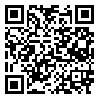Volume 4, Issue 2 (3-2011)
2011, 4(2): 1-20 |
Back to browse issues page
Download citation:
BibTeX | RIS | EndNote | Medlars | ProCite | Reference Manager | RefWorks
Send citation to:



BibTeX | RIS | EndNote | Medlars | ProCite | Reference Manager | RefWorks
Send citation to:
Shokri O, Farahani M N, Kormi Nouri R, Moradi A R. A Structural Equation Modeling Approach to the Cross-Cultural Analysis of the Relationship between Neuroticism, Academic Stress and Health Behaviors among Iranian and Swedish University Students. Research in psychological health 2011; 4 (2) :1-20
URL: http://rph.khu.ac.ir/article-1-104-en.html
URL: http://rph.khu.ac.ir/article-1-104-en.html
1- , oshokri@yahoo.com
Abstract: (13050 Views)
The main aim of this study was to investigate the model of structural relations between neuroticism, academic stress and health behaviors among Iranian and Swedish students.199 students (100 Iranian and 99 Swedish) completed the Big Five Inventory-SV (BFI-SV, Rammstedt & John, 2007), the Academic Stress Questionnaire (ASQ, Zajacova, Lynch & Espenshade, 2005) and the Health Behavior Inventory (HBI, Broman, 1998). Relations between latent and observed variables in the conceptual Model were examined using structural equation modeling. The results of structural equation modeling showed that the global model had an acceptable fit to the data. In the global model, neuroticism and academic stress showed a significant positive relationship and the results of the global model indicated a significant negative relationship between neuroticism and academic stress with health behaviors. The results of the culture specificity of structural relations showed that structural relations were equivalent for the cultural groups. In sum, these findings through emphasizing the importance of the integration of trait and cultural psychology perspectives, retains heuristic value in designing studies, formulating hypotheses, and making theoretical refinements in the study of the structural relations between neuroticism, academic stress and health behaviors across cultures.
Type of Study: Research |
Published: 2011/03/15
Published: 2011/03/15
Send email to the article author
| Rights and permissions | |
 | This work is licensed under a Creative Commons Attribution-NonCommercial 4.0 International License. |





